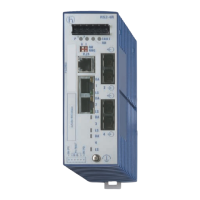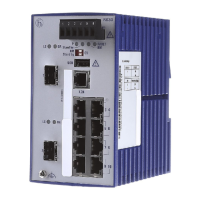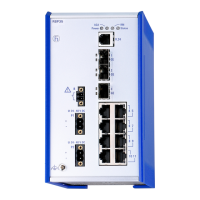Glossary
553
CLI L2P
Release
7.0
05/2011
MDIX. Management Dependent
Interface Crossover.
MIB. See “Management Information
Base” on page 552.
MOSPF. See “Multicast OSPF” on
page 553.
MPLS. See “Multi-Protocol Label
Switching” on page 553.
Multicast Backbone. The MBONE
is a virtual network. It is layered on
top of portions of the physical
Internet to support routing of IP
multicast packets since that function
has not yet been integrated into
many production routers. The
network is composed of islands that
can directly support IP multicast,
such as multicast LANs like
Ethernet, linked by virtual point-to-
point links called "tunnels". The
tunnel endpoints are typically
workstation-class machines having
operating system support for IP
multicast and running the "mrouted"
multicast routing daemon.
Multicasting. To transmit a
message to specific recipients
across a network. A simple example
of multicasting is sending an e-mail
message to a mailing list.
Teleconferencing and
videoconferencing also use
multicasting, but require more robust
protocols and networks. Standards
are being developed to support
multicasting over a TCP/IP network
such as the Internet. These
standards, IP Multicast and Mbone,
will allow users to easily join
multicast groups. Note that
multicasting refers to sending a
message to a select group whereas
broadcasting refers to sending a
message to everyone connected to
a network. The terms multicast and
narrowcast are often used
interchangeably, although
narrowcast usually refers to the
business model whereas multicast
refers to the actual technology used
to transmit the data.
Multicast OSPF. With a MOSPF
specification, an IP Multicast packet
is routed based both on the packet's
source and its multicast destination
(commonly referred to as source/
destination routing). As it is routed,
the multicast packet follows a
shortest path to each multicast
destination. During packet
forwarding, any commonality of
paths is exploited; when multiple
hosts belong to a single multicast
group, a multicast packet will be
replicated only when the paths to the
separate hosts diverge. See “P” on
page 555 for more information.
Multiplexing. A function within a
layer that interleaves the information
from multiple connections into one
connection.
Multi-Protocol Label Switching.
An initiative that integrates Layer 2
information about network links
(bandwidth, latency, utilization) into
Layer 3 (IP) within a particular
